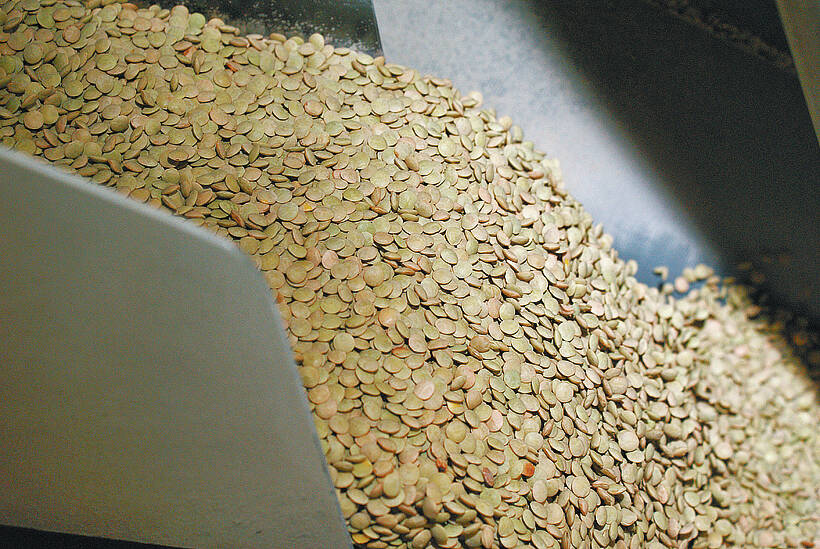A good quality winter wheat crop is off the fields, in the bin, and some is already on its way to end-use customers.
The Canadian Wheat Board says most of the 1.5 million tonne crop will fall into the top two grades, and expects protein levels to be slightly above average, ranging from 11 to 12 percent.
Yields vary widely, but are expected to be down by five to 10 percent on average.
Now the industry’s attention will turn to whether prairie producers will be able to seed as much winter wheat as they’d like to this fall.
Read Also

Green lentil market oversupplied
Farmers in Western Canada can expect price pressure on their new crop of green lentils, as the available supplies among the world’s major lentil-growing nations increase significantly.
“That is the big issue,” said winter wheat grower Rod Fedoruk of Kamsack, Sask., chair of the Saskatchewan Winter Cereals Development Commission.
“With the delay in the fall harvest, we’re going to have difficulty getting the crop in.”
The problem is that winter wheat should be seeded into canola stubble for disease control reasons, but the canola harvest is running behind schedule, leaving some would-be growers with nowhere to put the crop.
Also, completing harvest is the top priority, and some producers may decide to forget about seeding this fall.
As Jake Davidson, executive manager of Winter Cereals Canada, put it, “the crop was late and I think it’s going to bite us in the rear end.
“People who are relying on canola stubble, it may not happen this year,” he said.
Producers can also successfully seed into barley or oat stubble, although oats does carry a risk of fusarium in some areas. Some farmers seed into pea stubble, although snow trapping is generally poor. Mustard stubble and chemical fallow can also work.
The target date for seeding winter wheat is Sept. 15, reflecting both crop insurance rules and agronomics. The crop needs to be at the three-leaf growing stage before freeze-up, at which point the crown tissue has developed enough to survive the winter.
Larry Duran, an agrologist with Ducks Unlimited in Humboldt, Sask., said later seeding also means later growth in spring, which means increased weed competition and more risk for wheat midge and fusarium.
However, he added, even though late seeded winter wheat has lower yield potential, it provides benefits related to managing the spring workload.
Industry officials say that when all is said and done, winter wheat area probably won’t match last year’s 1.5 million acres, although no one is prepared to make any specific predictions.
It had been widely expected that acreage could match or even exceed last year, given the price outlook for winter wheat.
The pool return outlook for No. 1 CWRW select 11.5 percent is $270 a tonne, or $7.33 a bushel (Saskatchewan farmgate price).
CWB agrologist Mike Grenier anticipates a drop in planting, but he doesn’t consider that a setback for the winter wheat sector.
“If we look at the fact that acreage has leaped forward the last two years back-to-back, for it to contract a little bit is not that unexpected,” he said.
“I expect the long-term trend to continue to be up.”














